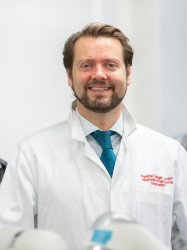BibTex format
@article{Liu:2020:10.1109/ACCESS.2020.2977072,
author = {Liu, H and Rodriguez, y Baena F},
doi = {10.1109/ACCESS.2020.2977072},
journal = {IEEE Access},
pages = {42010--42020},
title = {Automatic markerless registration and tracking of the bone for computer-assisted orthopaedic surgery},
url = {http://dx.doi.org/10.1109/ACCESS.2020.2977072},
volume = {8},
year = {2020}
}

